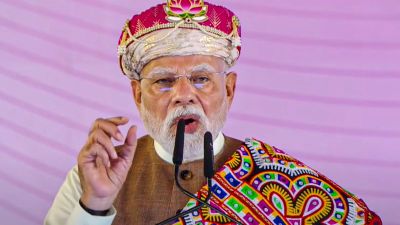Now smart-card-carrying Cong worker
This isn’t exactly the best of times for the Congress. WITH the Sharad Pawars and K Karunakarans thumbing their nose at the leadership,...

This isn’t exactly the best of times for the Congress. WITH the Sharad Pawars and K Karunakarans thumbing their nose at the leadership, it doesn’t take a computer to figure out that the Congress needs better communication within. But it may well take a computer to fix this.
The Congress has decided to distribute, to all its active members, ‘‘computer-chip enabled smart cards’’ to help them communicate directly with party chief Sonia Gandhi. The members, the party promises, will have these cards in hand by the next general election. And then, with the click of a mouse, they can get on to the Congress ‘‘intranet.’’ In other words, from Sonia right down, leaders will be accessible to the foot-soldiers.
|
M@iling Sonia
|
|
• Each smart card gives holder a four-digit special access code while the chip has name and details of his/her membership.
• After a card is inserted into a device linked to a computer at DCC or PCC offices, a member can access the Congress intranet, post messages. • He can send/receive messages to/from various departments at all levels, including the AICC leaders • In case a member can’t reach a party office to activate the card, he/she can use the codes via the Internet. |
Apart from allowing members to directly talk to the high command and remain in touch with the All India Congress Committee, the party hopes the cards will also help cut bogus membership at the lower level. Called ‘OmVCard,’ it was approved by Sonia after a series of modifications last month.
The plan—dubbed ‘‘dynamic networking of party infrastructure’’—is being implemented by the AICC’s Central Election Committee (CEC), while the technology is being provided by a Delhi-based company, MGRM Net. Says CEC chairman Ram Niwas Mirdha: ‘‘The idea is to make the Congress a modern party, as opposite to any other party in the country.’’
Since most of the Pradesh Congress Committees (PCCs) and district Congress committees (DCCs) have computers, all the party needs to do, says Mirdha, is to enable these for use of smart cards. Apart from party offices, however, the cards will be equipped for use on the Net anywhere in the country through a series of access codes, specific to each person.
While the cost right now is around Rs 200 per card, the price is expected to come down when bulk orders (the active membership of the Congress stands at over 11 lakh) are issued. The over two crore primary members of the party will get a simpler card, with limited access, costing Rs 20.
According to Mirdha, the idea was that before preparing the strategy for the Lok Sabha elections, the Congress should be armed with profiles on its members. There was also serious concern over the infiltration of large numbers of bogus members into the party. The last census conducted by the party, during the 2000 organisational elections, showed it had 11,65,683 active members and 2,93,45,459 primary ones. ‘‘At present there is no way of ascertaining who exactly is the person calling himself a member of the party. There are no photographs, no background. The members do not even have numbered identity cards,’’ Mirdha points out.
‘‘The smart cards would be issued selectively,’’ he adds. ‘‘In the first phase to office-bearers in the AICC and PCCs, and then to AICC members. The next phase will feature active members.’’
Through the card, a member can log on to websites of the party—including those of the party president, AICC and state units—and post what he or she is doing. A member will be pulled up for not doing this on a regular basis. The websites, it is hoped, would thus become a bank of intelligence on each area, keeping members updated on the movement of other leaders in the areas, besides other local information.
Mirdha adds that the present membership drive, to conclude on November 15, would be the last one to follow the old method, where members were admitted just through filing an application form.
Photos


- 01
- 02
- 03
- 04
- 05





























